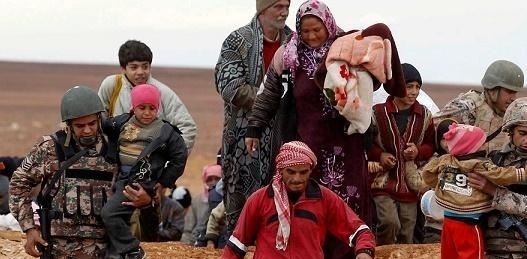The number of Syrian refugees stuck in the neutral border area between Jordan and Syria is increasing by about 200 per day, according to the Jordanian newspaper Al Ghad, quoting Jordanian official sources.
The sources said that Jordan had carried out a huge role in receiving 1.3 million Syrian refugees and with regard to the rapid increase – where their number in December was about 12,000, and reached 16,000 the following month, the sources said Jordan’s estimates indicated their number had now reached about 50,000.
They confirmed that Syrian refugees stuck in the border area between Jordan and Syria, specifically near the Hadalat and Raqabat crossing points, were not allowed to enter the Kingdom except after strict security checks, adding that security topped all criteria.
The official sources rejected accusations that Jordan’s policy had changed toward the stranded refugees, saying that some refugees were entering according to Jordan’s field evaluations and the security clearance process.
“We hope others offer even a little of what we have offered,” the sources said, calling for more support from the international community to Jordan, which is carrying out its humanitarian role on behalf of this community.
International organizations, in cooperation with the Jordanian government, are bringing in food, water, and heating for the refugees in this area, while the Kingdom is preserving an open border policy, according to the same sources, who said that priority of entry was given to elderly, women, children, and the sick.
A humanitarian source working with refugees in the neutral zone between Syria and Jordan, which is surrounded by sand berms, said that the tragedy was compounded because of the bad weather conditions associated with heat waves and sandstorms, adding that the distribution of food and aid has also been affected.
This article was translated and edited by The Syrian Observer. Responsibility for the information and views set out in this article lies entirely with the author.


